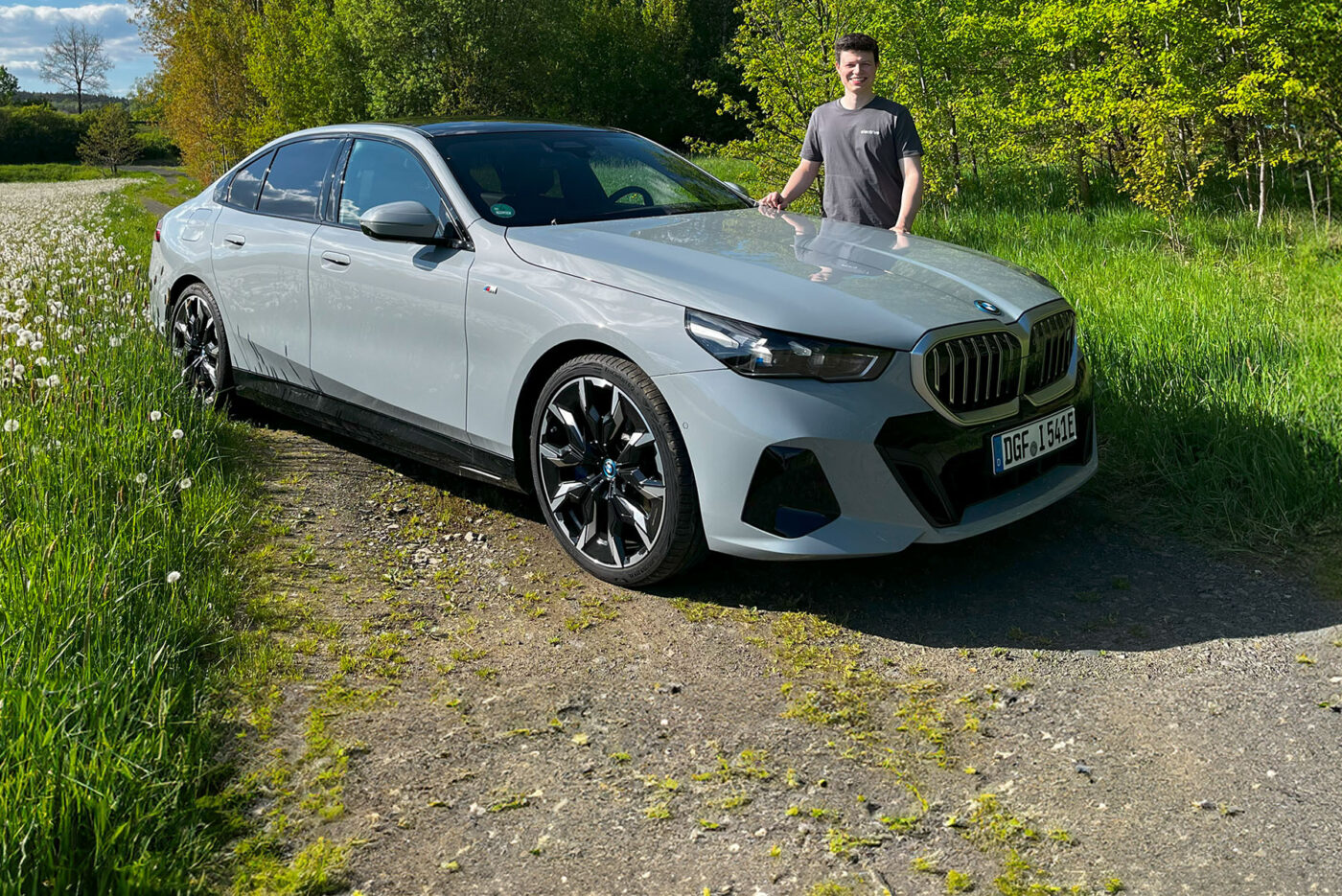
Testing the BMW i5 eDrive40: The near-perfect long-distance cruiser
The BMW press cars are parked in a functional, completely dark grey hall in Garching near Munich. Our test car sits next to the somewhat obese iX, the chunky i7 and the i4 with the buck teeth. The i5 is perhaps the first BMW in a long time that is actually pretty. Although the kidney grille design remains massive, it is more pleasing and finely drawn. The proportions fit. Everything looks more like a classic BMW again. Amid all the design experiments we have seen from Munich in recent years, the i5 is a lovely ray of hope. It seems to be heading in the right direction.
Familiar interior
As different as the current BMWs appear on the outside, they are very similar on the inside: Lots of crystal look, (too) much glossy plastic, but still a very high-quality finish. The buttons on the left of the steering wheel control the assistance systems, while the infotainment, speedometer and head-up display are on the right. The speedometer display is flush with the wide central display, which can still be operated using the familiar rotary-push control. Unfortunately, the iDrive buttons are no longer haptic buttons with a matt finish, but a large, shiny, greasy surface.
The seating comfort is decent, especially in the rear seat, which is often neglected in other electric saloons. Due to the battery being built into the floor, many manufacturers sacrifice either legroom or headroom for rear-seat passengers. The i5, on the other hand, has a neat thigh rest, a good leg angle, plenty of headroom and sufficient legroom for most people. It only gets tight if the driver or the front passenger and the person behind them are both over 1.80 metres tall.
Sophisticated infotainment
Another highlight is the extra-large head-up display, thanks to which, in combination with the steering wheel controls, you rarely have to take your eyes off the road. Navigation, music, and call lists are projected directly into the driver’s field of vision. The rest of the infotainment system is also impressive. Operation is straightforward and logical via touch, rotary pushbuttons, steering wheel buttons or voice control; only the app overview is confusing, as you can never find what you are looking for immediately. However, the search function and voice control are happy to help.
The charging planner makes sensible suggestions and offers various configuration options for the optimum route. You can favour or exclude providers and choose how full the battery should be when you arrive at the charging station or your destination. The State of Charge SoC forecast is realistic and precise, with clever rescheduling for faster or slower journeys.
Another positive feature is the BMW ID, which can be used to save seat positions, among other things. After logging in, the i5 automatically adopts the seat and mirror settings known from the last BMW used. And there is, of course, wireless Android Auto & Apple CarPlay – although we hardly used this because BMW’s own infotainment (thanks to Spotify integration, among other things) leaves little to be desired. Particularly useful if you want to work during a charging break (or have children to keep occupied in the back seat): Two of the six USB-C ports are powerful enough to charge even larger devices such as laptops.
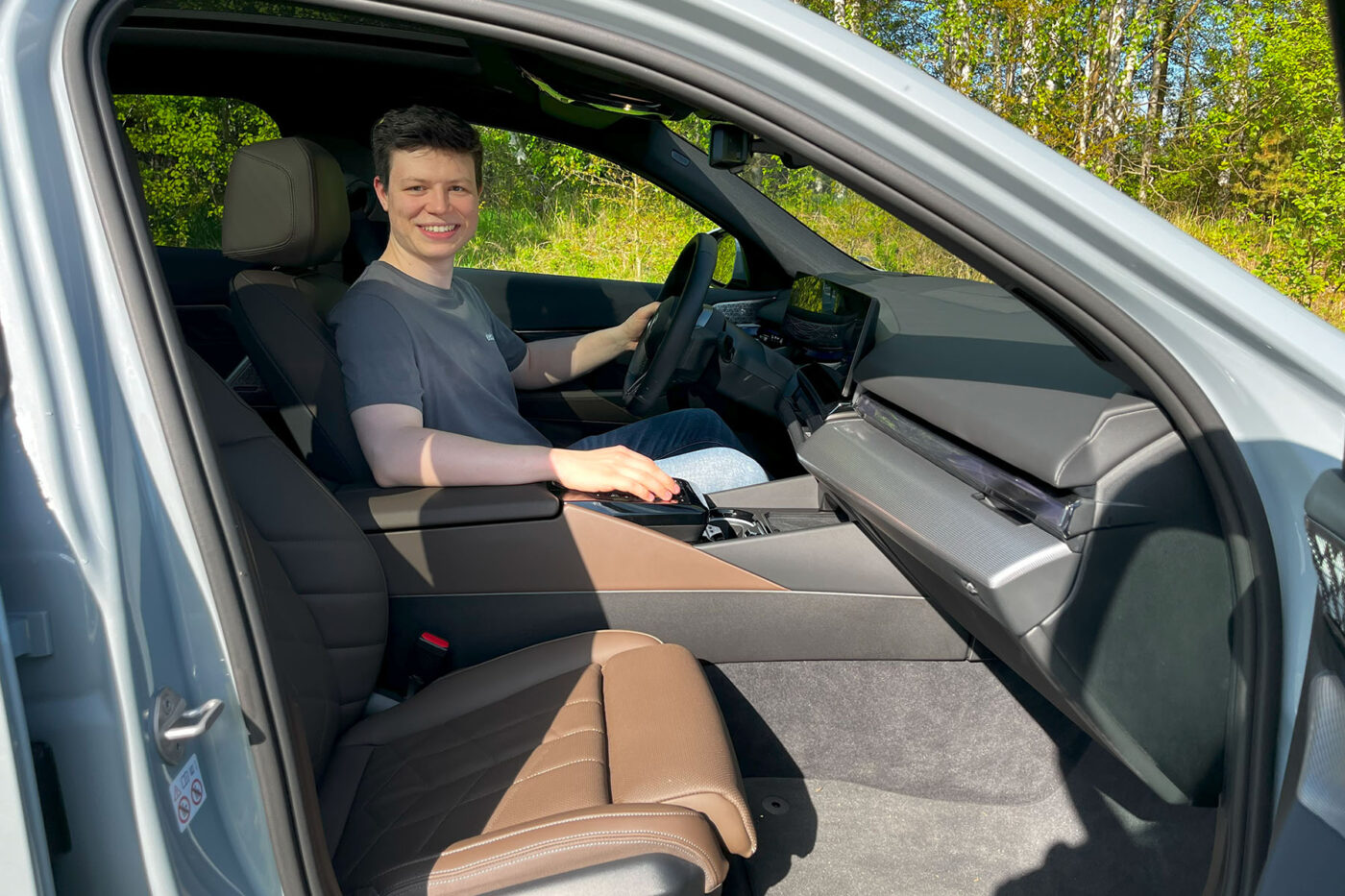
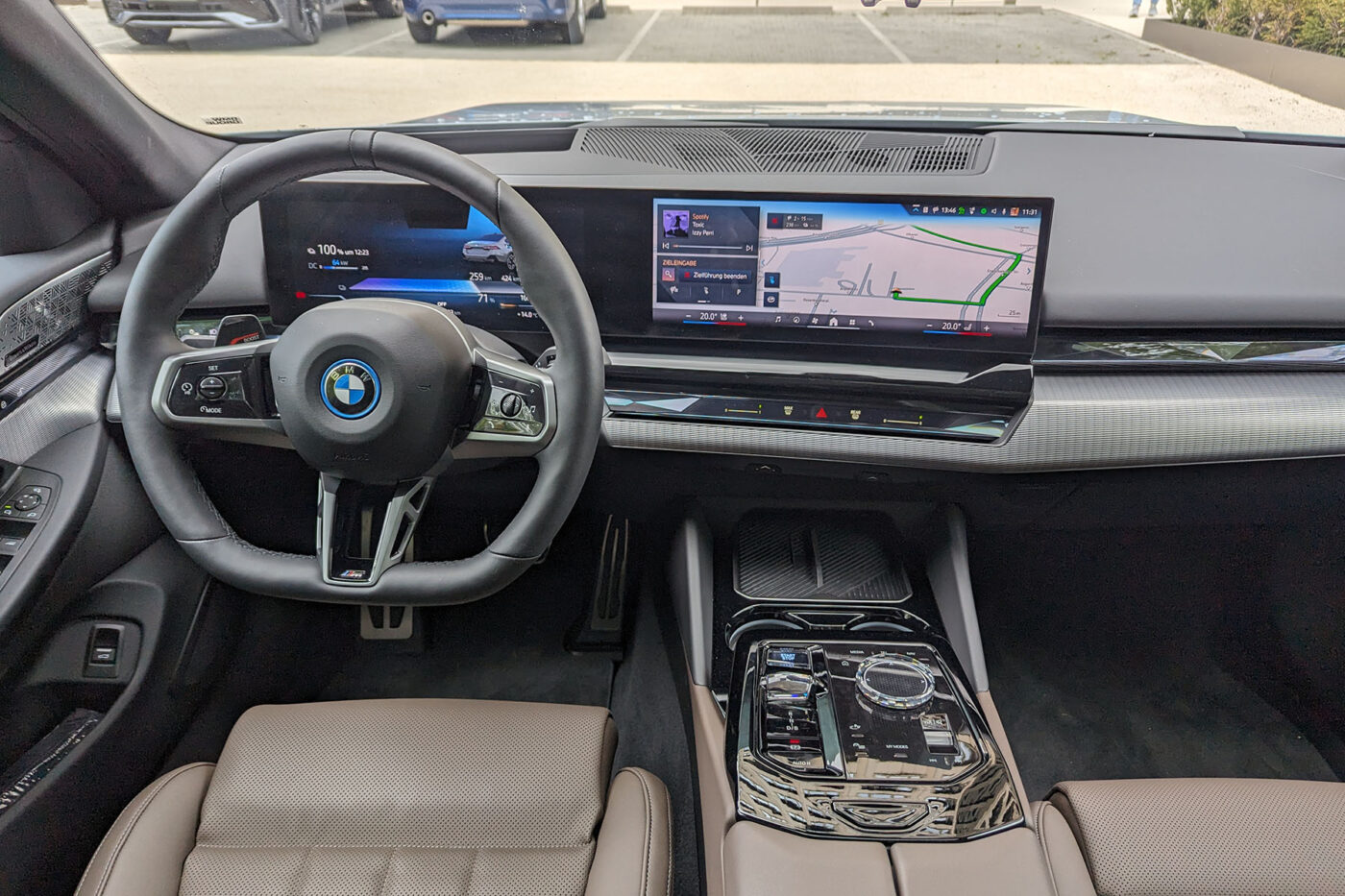
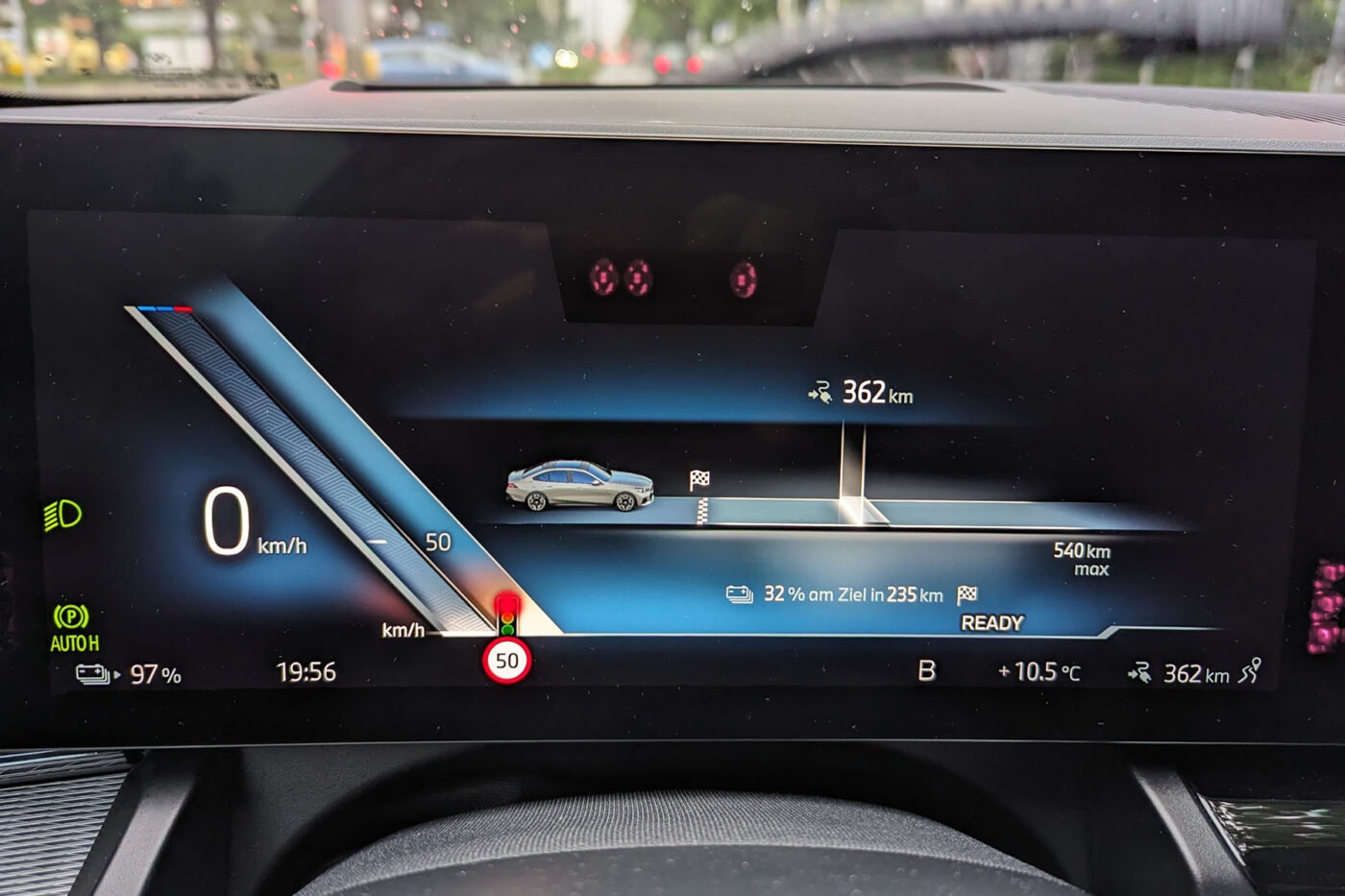
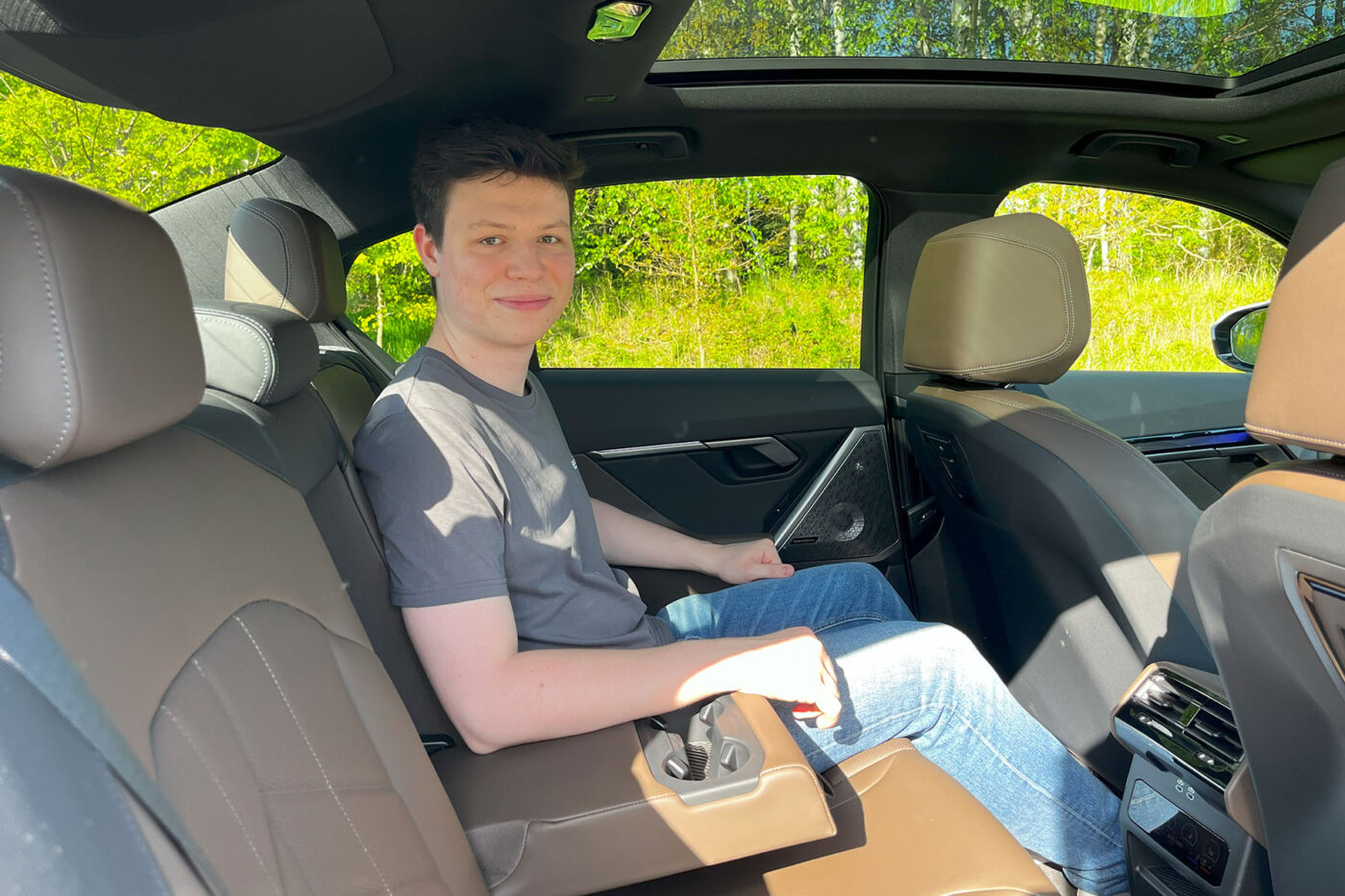
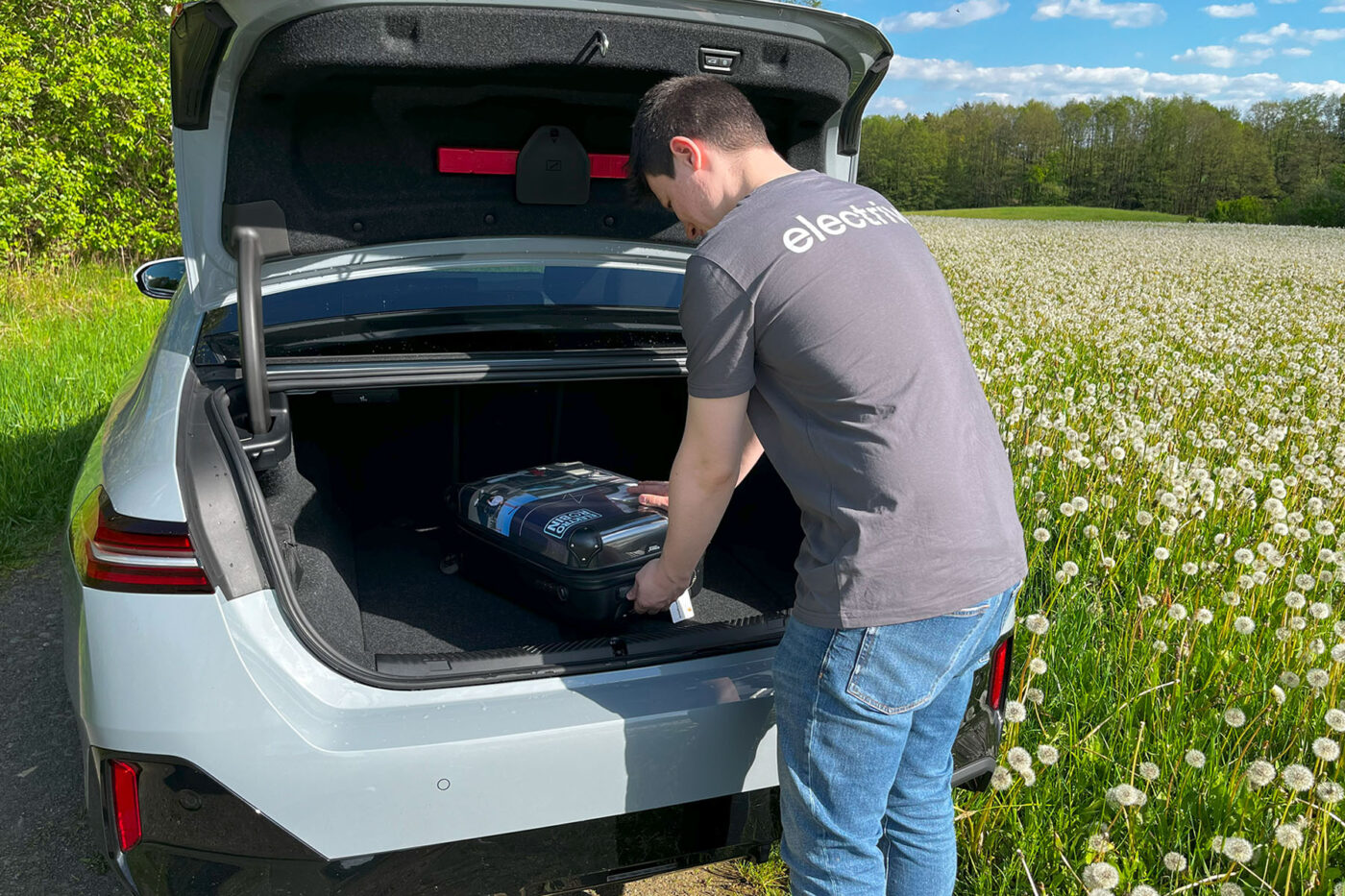
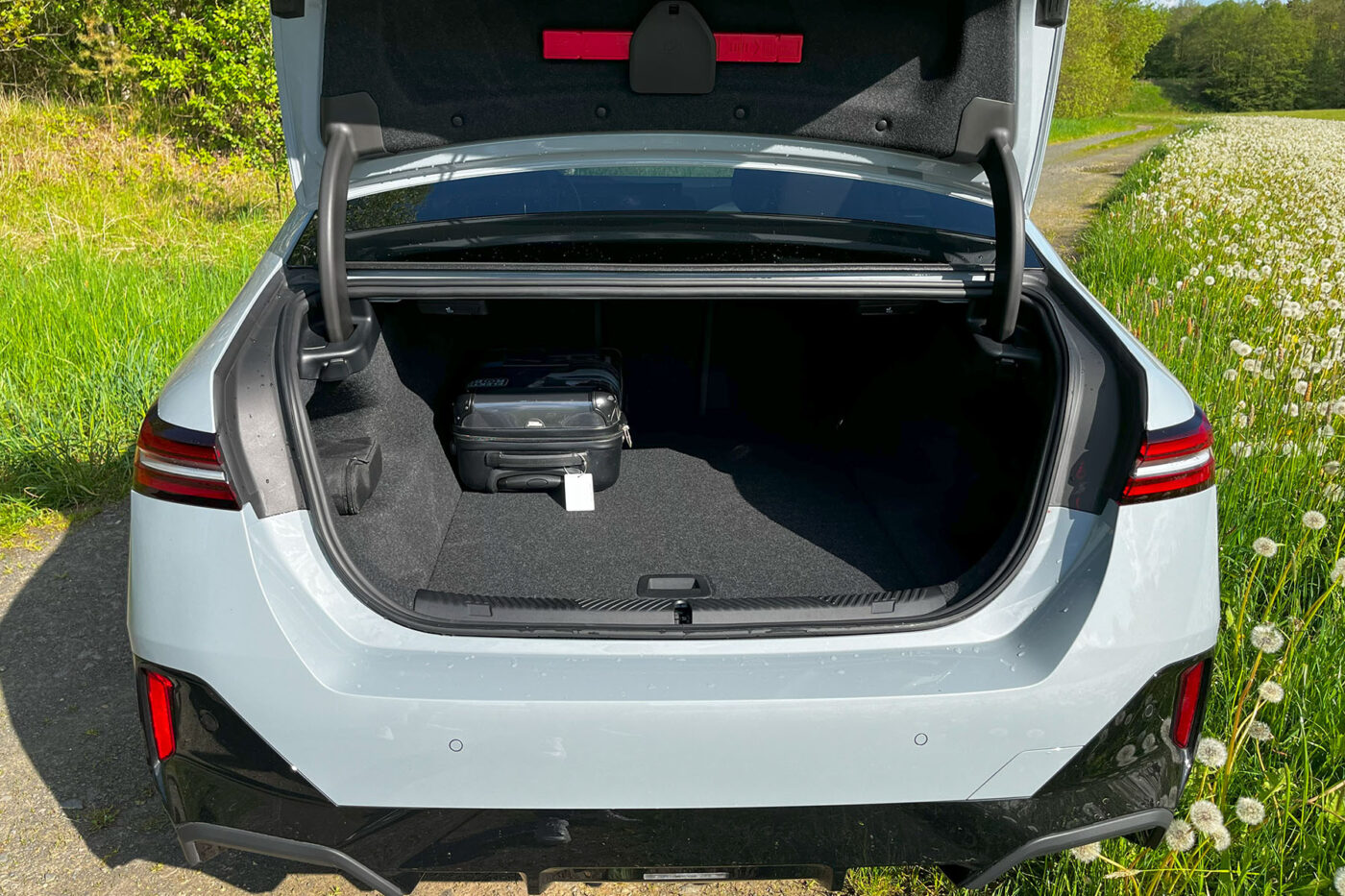
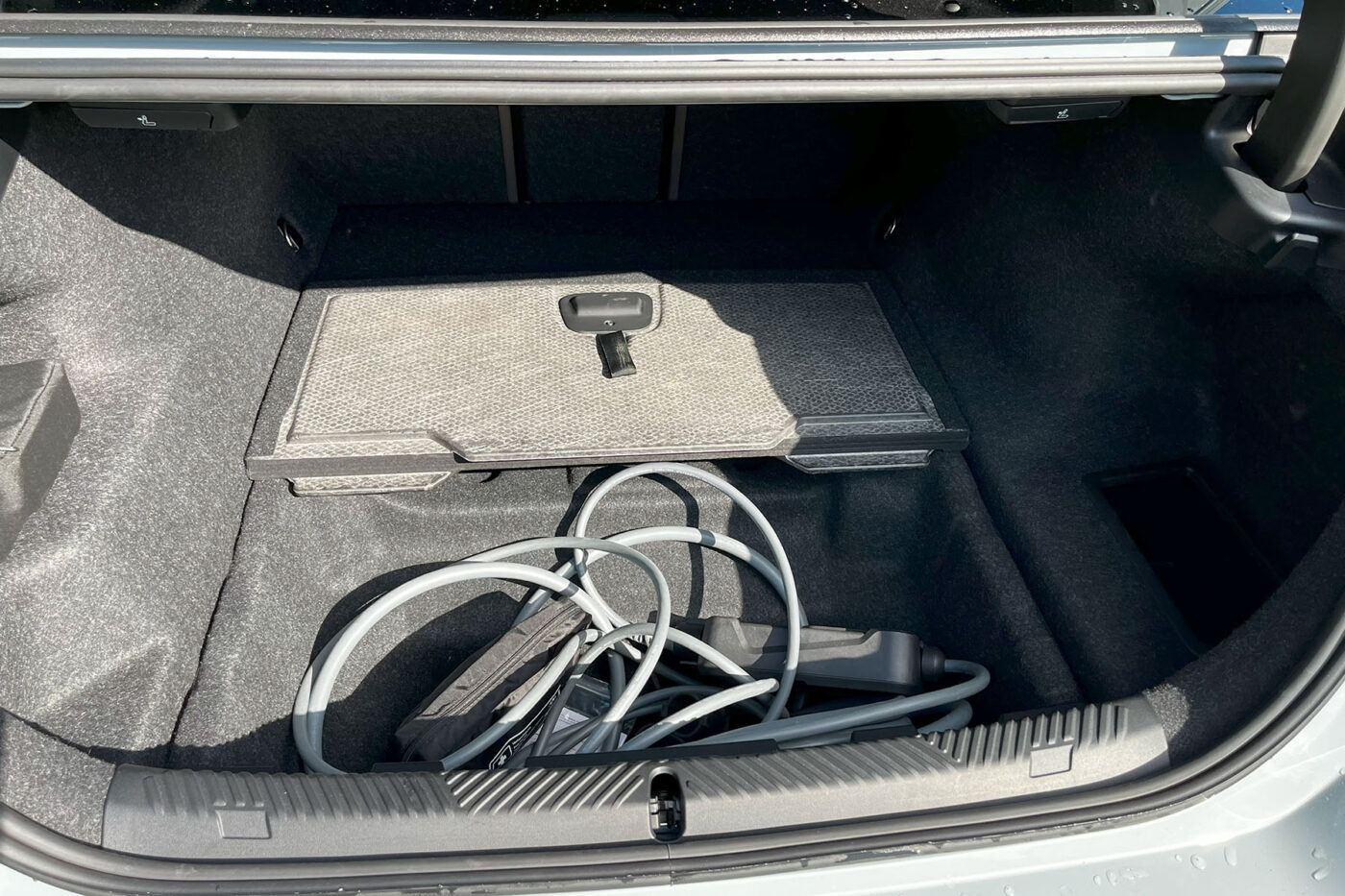
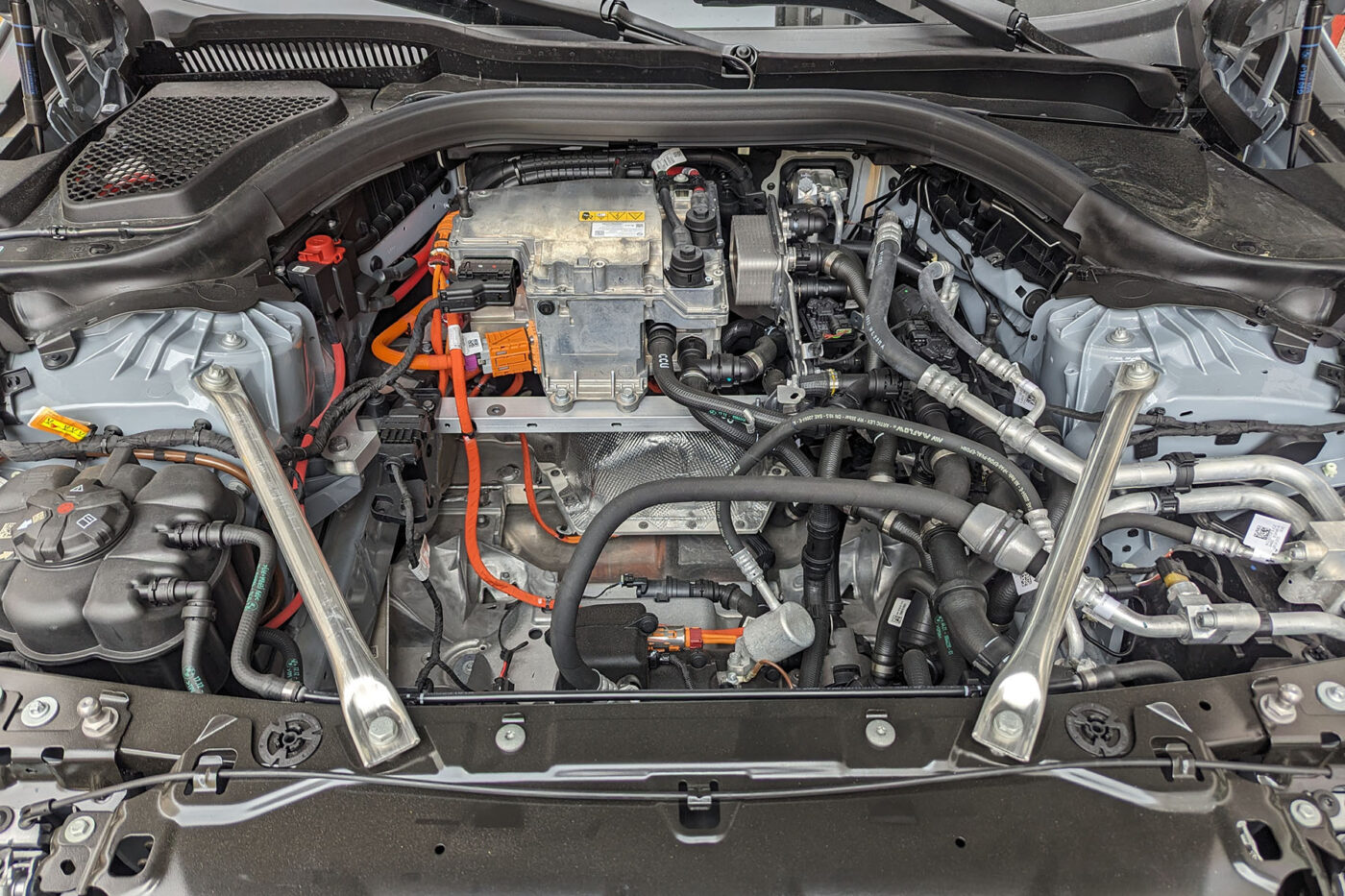
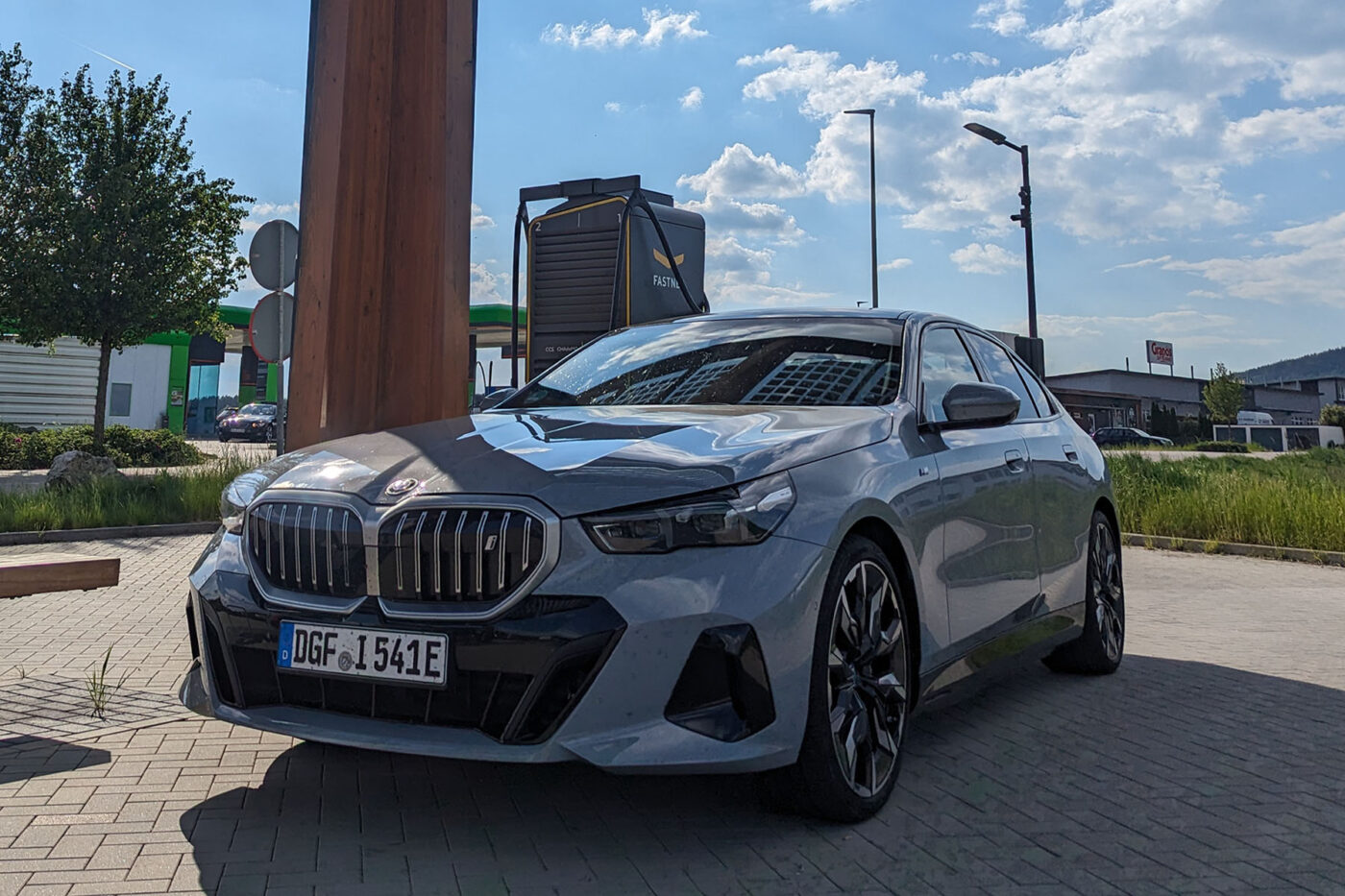
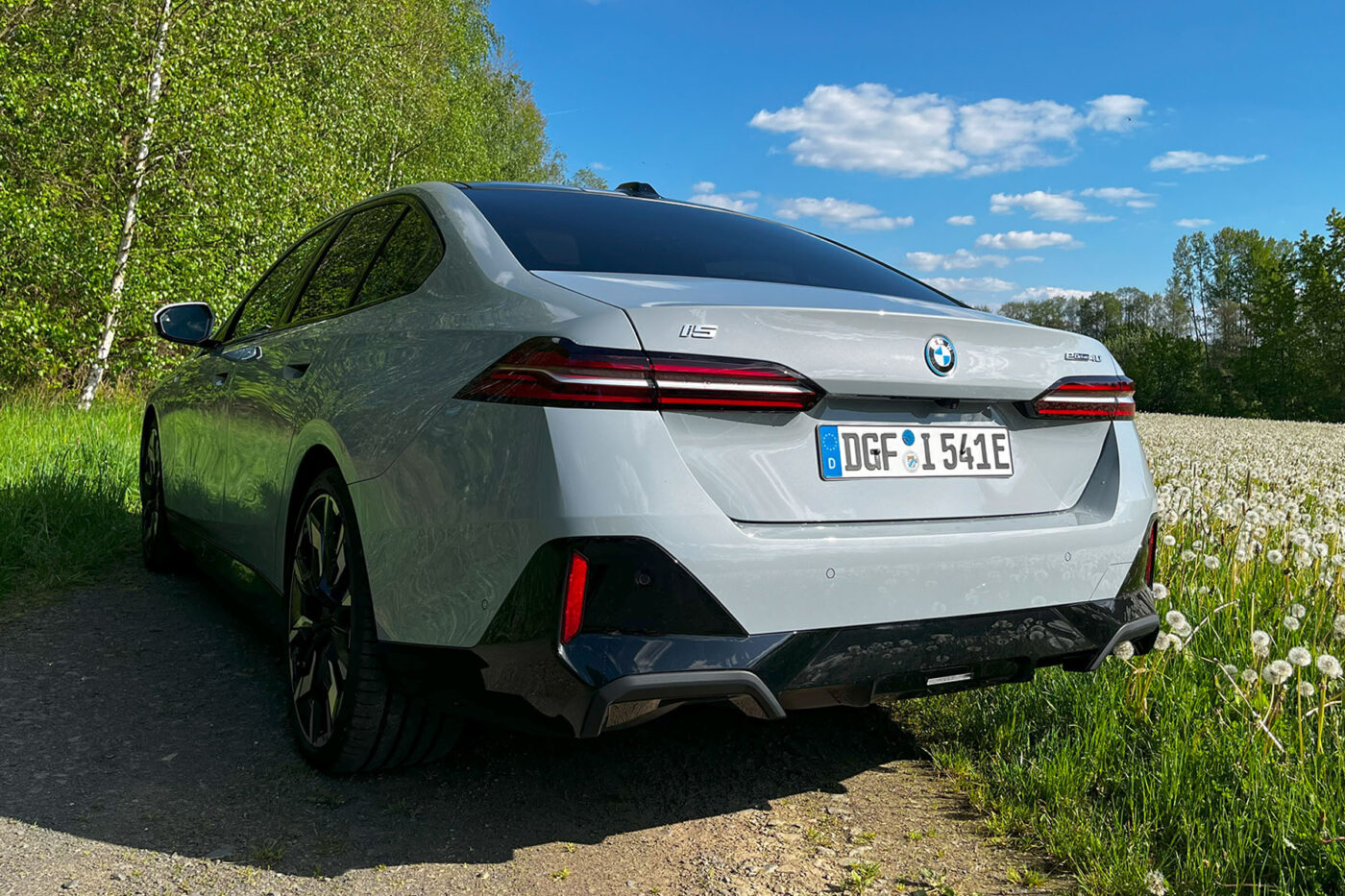
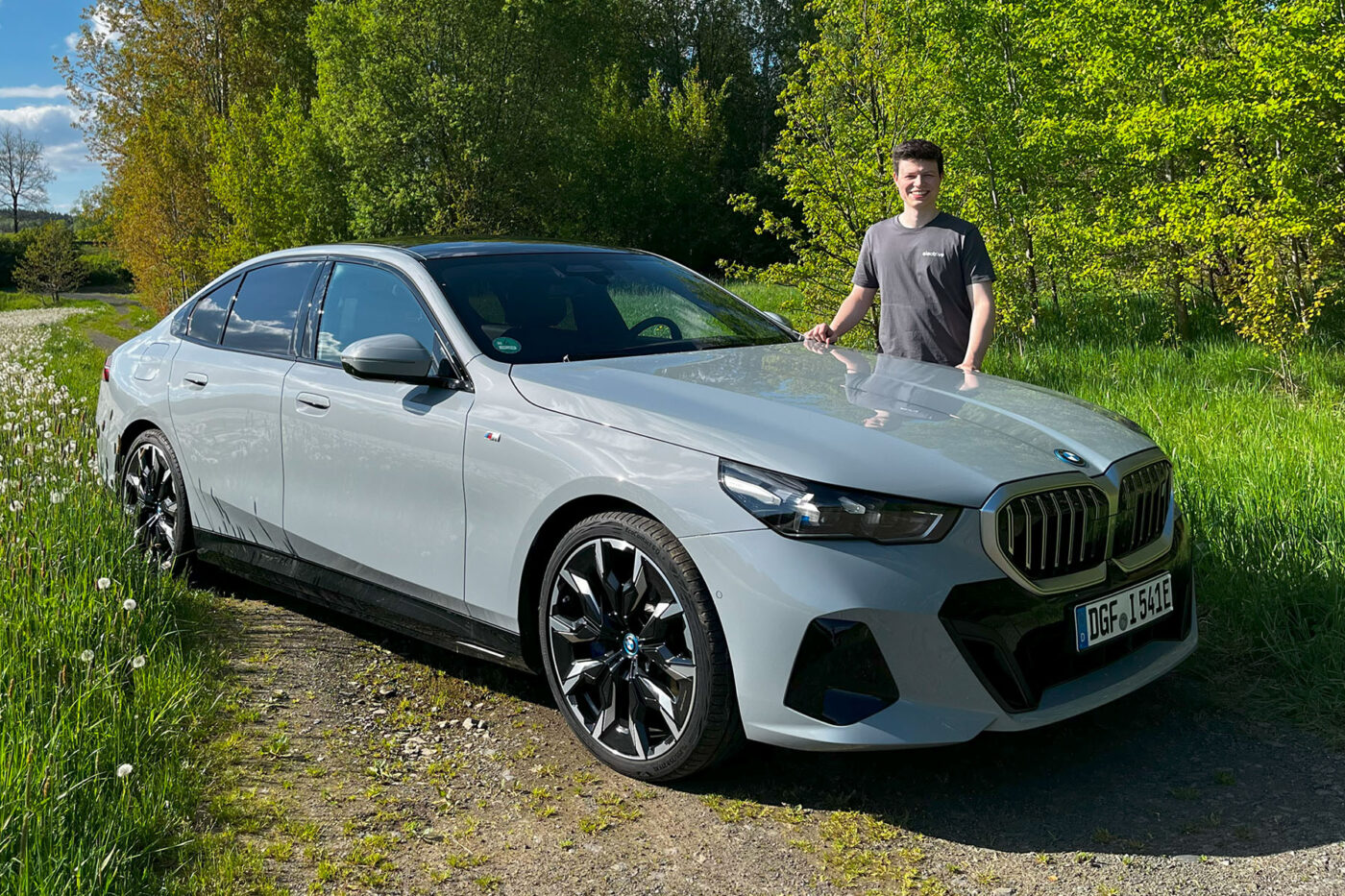
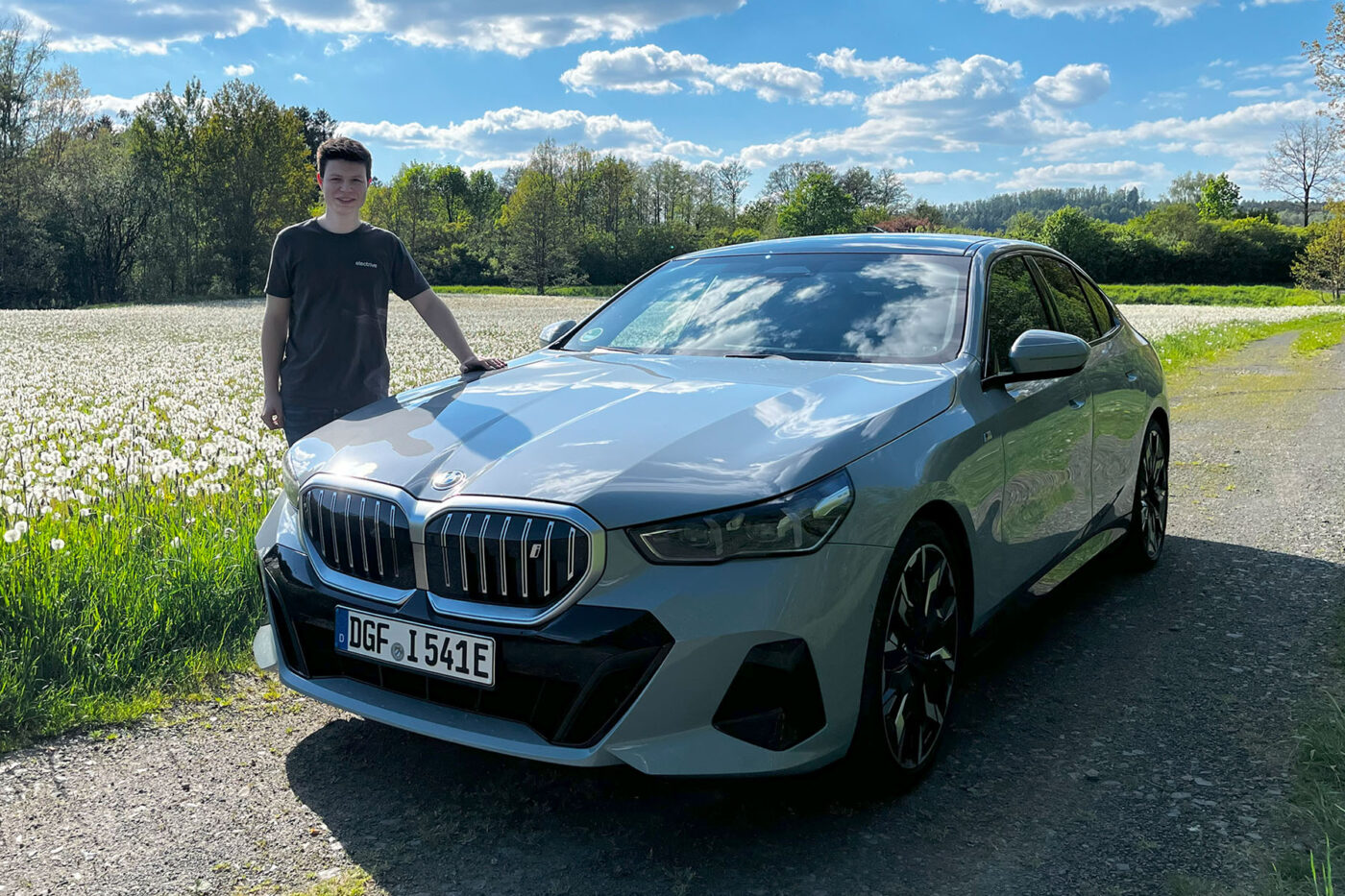
The joy of travelling
As usual, BMW delivers on the chassis: it sits firmly on the road, well-balanced between sportiness and comfort. Whether you are creeping through a 30 kph zone with lots of potholes or racing along a winding motorway at top speed (196 kph according to the speedometer), the i5 always feels comfortable. Travelling at 180 kph is as effortless and easy as 120 kph.
The 250 kW engine of our rear-wheel drive basic version is sufficient for 99% of all situations. At most, it lacks a little “oomph” when starting at traffic lights. If you don’t need all-wheel drive, you can opt for the rear-wheel drive model, available from €70,200 in Germany.
More important than brute acceleration is good optional equipment – in our test car, this included a panoramic roof, active suspension, various assistants, ventilated seats, the head-up display and a 22 kW AC charger. Depending on your wishes, you will need to budget a further €15,000 – €20,000.
Assist Plus: watching the car drive
The assistance systems are particularly worth the money. They are categorised as level 2 according to SAE J3016, but definitely at the high end. On the motorway, the driver’s hands can be taken off the steering wheel permanently at speeds of up to 135 kph. Several cameras monitor the driver’s attention (and also demanded again by energetic grumbling if the driver turns away). As soon as route guidance is active in the sat nav, the system automatically suggests lane changes; a slightly longer glance in the side mirror is sufficient for confirmation. It does not yet work perfectly in heavy traffic, as the system is sometimes too hesitant. There is also still a bit of a problem when it comes to anticipation: while a human would change lanes in good time when a truck is approaching the motorway, the i5 first stays behind, brakes properly down to 80 kph, and only then comes up with the idea of finally changing lanes.
In less dense traffic, the system is perfect. There is no need to intervene; you can simply watch the car do its job. The lane changes are sensible and smooth; speed limits are taken over cleanly, and distance and braking behaviour are safe and pleasant. In good conditions, you only have to override a system decision once every 10 to 20 kilometres, making long journeys much more relaxed.
It also keeps up well in traffic jams, forms an exemplary emergency lane, and the adaptive cruise control can stop automatically at red traffic lights.
Surprisingly economical
What is always surprising about BMW is the relatively low fuel consumption. On average, over a total of almost 1,700 test kilometres, we ended up with 24.5 kWh/100 km – which is perfectly acceptable for such a large and heavy car with a sporty driving style. If you set a strict limit of 130 kph (which is not that difficult with assisted driving), consumption no longer exceeds 20 kWh/100 km. Even with continuous full power, it only reaches 40 kWh/100 km – many competitors are significantly thirstier at high speeds.
It shows once again that even if BMW has not yet been able to make a clear commitment to electric mobility, it gained valuable experience many years ago with the i3 and can build really efficient electric drives.
Exemplary app
Apps are a bit of a blind spot for many car manufacturers. Most have one – but many don’t have a good one. BMW is doing well here, and the range of functions and operation of the app for the i5 is also impressive: the smartphone can be used as a key (remote control is then also possible), charging processes and air conditioning can be controlled and timed, there is a map for localisation and the option to take photos and videos of the surroundings. Particularly useful are the extensive statistics, in which all charging curves and distances travelled, including consumption, are stored. Anyone who needs to keep a logbook has all the important data at their fingertips without much effort.
| i5 eDrive40 | i5 xDrive40 | i5 M60 xDrive | |
|---|---|---|---|
| Drive | RWD | AWD | AWD |
| Performance | 240 kW | 290 kW | 442 kW |
| Torque | 430 Nm | 590 Nm | 820 Nm |
| Acceleration | 6.0 s | 5.4 s | 3.8 s |
| Top speed | 193 kph | 215 kph | 230 kph |
| Battery | 81.2 kWh | 81.2 kWh | 81.2 kWh |
| WLTP range | 582 km | 538 km | 516 km |
| Charging capacity DC | 205 kW | 205 kW | 205 kW |
| Charging time DC 10-80% | 30 min | 30 min | 30 min |
| Charging capacity AC | 11 kW/22 kW | 11 kW/22 kW | 11 kW/22 kW |
Two problems remain
Although the BMW makes a good first impression, it does not only merit a hymn of praise: There are two major slip-ups that BMW has made. Because, in typical BMW fashion (“power of choice”), not only does an electric drivetrain have to be able to fit in the car, but also a combustion engine, the utilisation of space is suboptimal. Despite the huge bonnet, there is no frunk; there is a lot of useless hollow space.
As comfortable as the rear bench is on the outer seats, the centre seat cannot be used or can only be used by people with very short legs due to a massive (and superfluous) cardan tunnel. Overall, the seat is very comfortable but less airy than you would expect in a 5.06-metre long car (one generation earlier, it was almost 7-seater in length). On a purely electric platform, the car could certainly be ten, perhaps even fifteen centimetres shorter with a similar amount of space – or offer more space inside with the same exterior length.
BMW’s hidden drawback: 400 volts
The space utilisation may be bearable (there is often only one person in the car anyway). However, the battery is really annoying: 81.2 kWh of usable capacity is not a small amount – if it were 2018. In 2024, however, this is too little for such a large vehicle. The i5 could be an ideal long-distance vehicle in all other disciplines. If you continuously drive at 120-130 kph, you can actually achieve 400 kilometres in the summer.
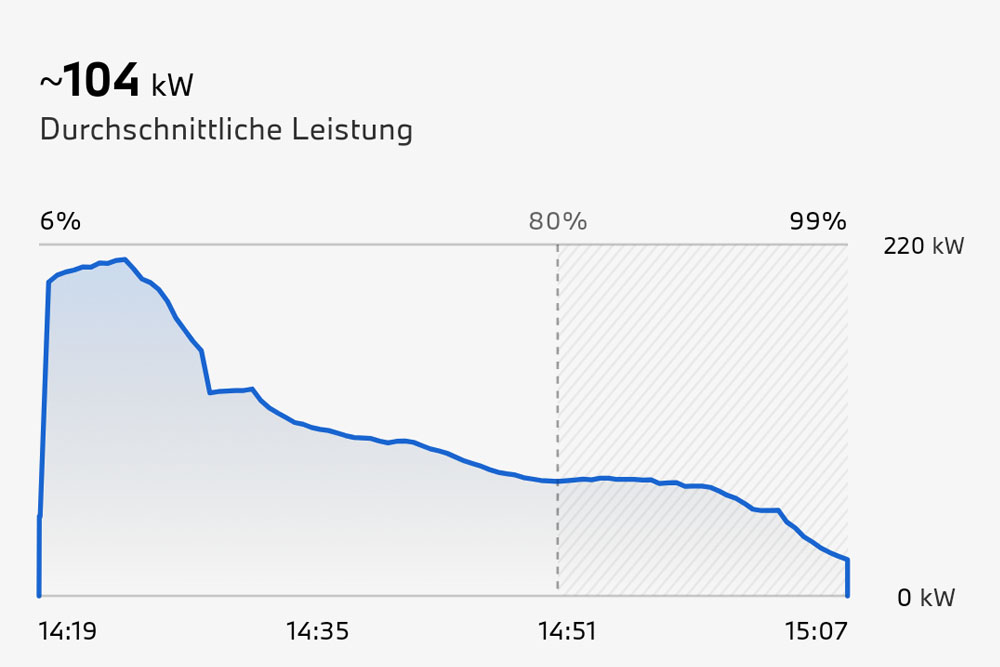
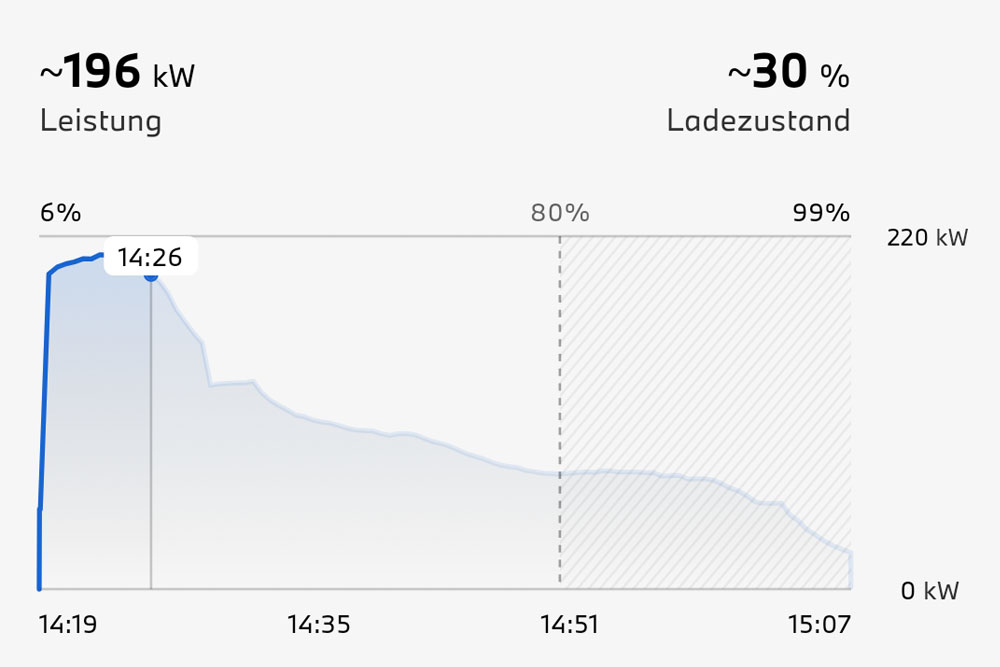
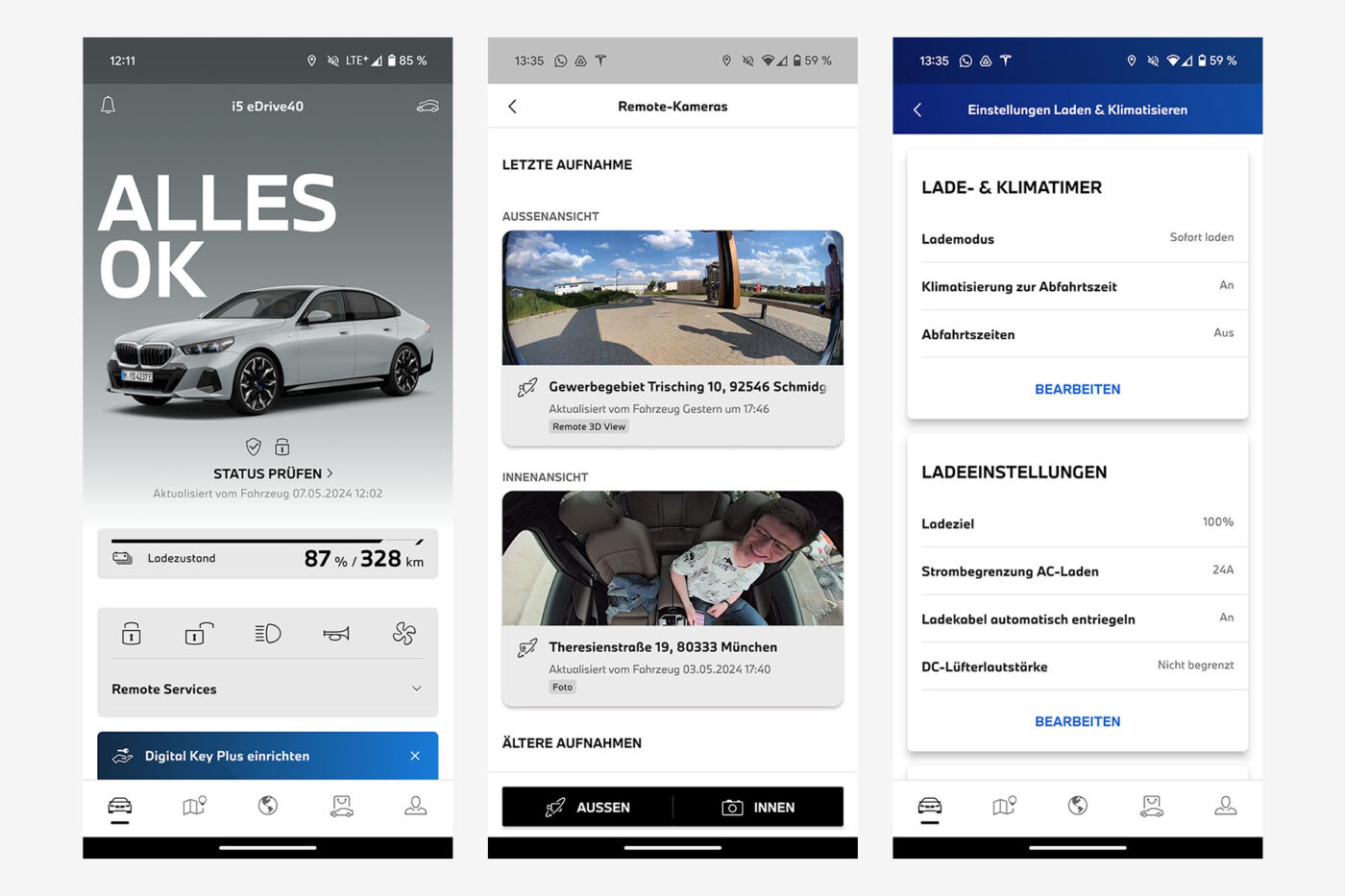
But with a car that sits so well on the road at 200 kph and is so easy to drive at the same time, you want to go faster than just 130 kph. With a fast driving style (180 kph maximum and occasional limited stretches), less than 300 kilometres are still possible. If the track is completely clear, the end is reached after one hour of full power (i.e. after 200 kilometres). If the i5 could at least charge really quickly, that would be manageable. But it doesn’t.
While Porsche, Kia-Hyundai or Lotus can charge in the region of ±20 minutes for 0-80% thanks to 800 volts, the i5 always takes over 30 minutes, and well over 40 minutes if not optimally preheated. That significantly limits the enjoyment of charging on long journeys and is no longer state of the art for this price range.
Conclusion: almost perfect
BMW has done pretty much everything right with the i5: it drives comfortably and yet is not unsportsmanlike, and for its decent size, it is still relatively economical in terms of fuel consumption. After various visually rather mediocre models, there is finally a pleasing design from Munich again. And: the software and assistance systems are among the best currently available in Europe. With a modern battery, it would probably be an all-round perfect car. As it is, however, it is “only” an almost perfect long-distance cruiser for anyone for whom an excellent chassis is more important than ultra-fast charging and maximum range.




2 Comments